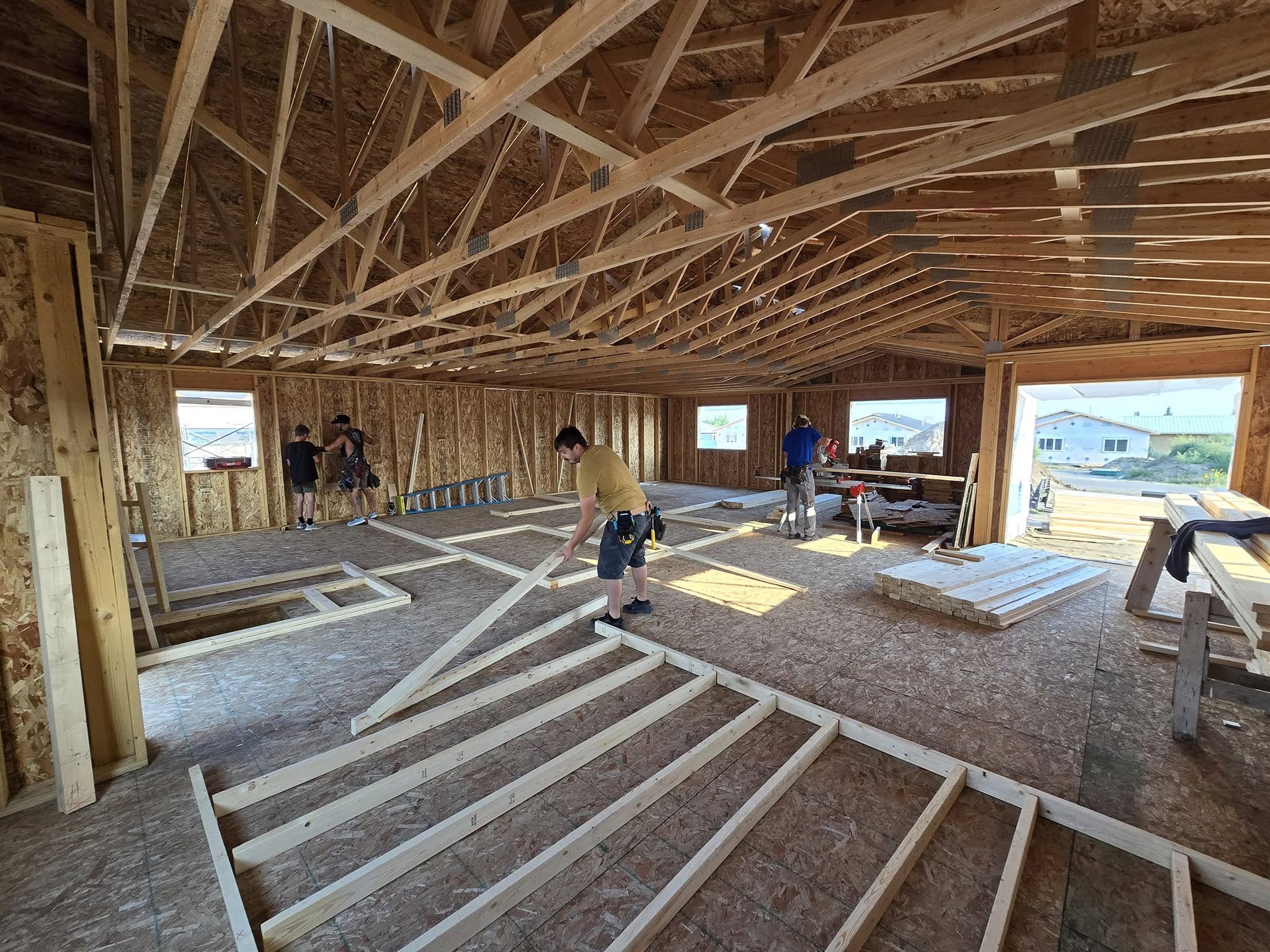
La Poblana Bakery, 2014, Ligonier, Indiana. Photo credit: David Cornwell via flickr, CC BY-NC-ND 2.0.
Last fall at the Opportunity Finance Network conference, Ed Gorman of the National Community Reinvestment Coalition said on a panel that many community development financial institutions (CDFIs) weren’t taking enough risk, and if CDFI loans were too safe, and losses too low, they weren’t fulfilling their mission. Having just been hearing many of the usual praises of how safe CDFI investments were, I put an asterisk next to this in my notes. Recently I was able to ask Gorman more about what he meant and what he and others were concerned about.
Miriam Axel-Lute: You spoke at the Opportunity Finance Network last year about a trend toward CDFIs playing it too safe that concerns you. Tell me more about that.
Ed Gorman: NCRC has a CDFI that was incorporated in the mid-2000s. Let me say to begin with that we haven’t done as much as we would like ourselves in this space, so what I say about others I know applies to our own lending.
Our target market was small businesses in the DC [metro area], with an emphasis on financing for African-American owned businesses. Our lending has been consistent in that respect, and we expanded our target market in 2014 when we started taking on real estate to do GROWTH [Generating Real Opportunities for Work Through Housing, “through which NCRC and public, private and nonprofit partners invest in single-family homes in LMI census tracts and/or for LMI homeowners”], which is our signature community-development, direct-service effort.
But my comments really were aimed at igniting a conversation. It’s stuff we’ve heard from our members and from influential CDFIs and CDFI leaders that we respect. Even past leaders of OFN have commented similarly in the same direction.

Ed Gorman, chief community development officer at the National Community Reinvestment Coalition
We’ve seen so much success on the fundraising side in the CDFI world that a lot of CDFIs have been, in a sense, captured by the process, the process being that to get the money you need to do the lending you want to do, you have to adhere to the risk profiles of the folks giving you the money. And to the extent those folks are risk-averse, then you are too. And that leads, to a certain extent, to mission drift, or more accurately, mission restriction.
We convened a meeting at our conference last year, and we heard from Bill Bynum [of HOPE Enterprise Corporation] and Calvin [Holmes] out of Chicago [Community Loan Fund] and others, that this is something that they observed as well. And so we wanted to start a conversation. The OFN presentation I did was intended as an extension of that, to promote the debate over to what extent we have lost focus on our original, collective missions, and to what extent do some CDFI leaders think that CRA advocacy is at odds with fundraising and capital raising.
Our view is, if you don’t refresh the root of the tree of CRA [the Community Reinvestment Act], then you won’t get the fruit of the tree. Folks need to be aware that a vibrant dialogue combined with advocacy around CRA is actually in many ways probably more responsible for the funding that they’ve gotten than even their own good, subsequent works.
Now, others may disagree with that, but at least understand that you have a duty to participate in that advocacy in some way, shape, or form. If it’s not direct, then it ought to be supporting others who do, particularly, when, as now, there are threats to the community input mandated by CRA.
But bottom line is how much risk is enough? How much risk is too much? I think every CDFI director who’s thoughtful has that conversation, but to the extent that they’re not driven by the mission, particularly around racial and economic disparities, then the bias will be toward accepting the risk profiles that the folks providing the capital want you to have without pushback. You ought to be taking risk commensurate with the mission at least as much as commensurate with the desire not to reduce profits.
This is a tough conversation for folks to have; because almost everybody who runs a CDFI or works at one thinks that they’re accomplishing their mission. That’s why they’re there. But it’s worth asking the question and having the conversation as to whether the impact you’re trying to have is the one you really do have, and whether you could reach a little further to have a greater impact.
In my experience in gatherings of CDFIs, they tend to emphasize the safety of their investments.
Yes. And I think that’s because the lenders are there, and they’re trying to raise more money. I don’t want to ascribe entirely cynical motivations to it. If you’re driven by the need to make impact, and impact is related to the amount of money you raise, and you’re talking to a person who’s got their hands on their wallet wondering if you’re going to say the right things, you’re going to say the right things.
It takes a special brand of leadership to say, “I want your capital, but you need to want what I’m doing because, if what I’m doing is successful in an impact way, you may lose a little bit more money, but you’re going to make a bigger impact.”
Do you think there are some folks who are thinking they don’t need more risk to create more impact? Who believe they’re making loans that other people wouldn’t do because they’re afraid of them, because the loans take more time, because there’s bias, but that they don’t necessarily have to be riskier to create impact?
Those are great questions. I think maybe all of the above are true. If you’re helping to lead a CDFI, or you’re in the position of advising someone who does, you have to deal with a budget that you’re going to do your best to balance every year. It takes roughly the same amount of time to close a small business loan that’s a microloan as it does a larger loan. You’re going to have to do a hell of a lot of volume to make up for the size of the loan. There’s more technical assistance needed, because the relative sophistication of the borrowers is lower, at least from a business standpoint. All of those things add up to a more difficult hill to climb, and you’re pretty much guaranteed [some] loss. That’s tough stuff.
So, when we wonder why we’re not seeing enough money make it into the hands of moderate-income [folks] and folks located in low- and moderate-income census tracks, it’s pretty clear why. It’s just tough stuff. Venture capitalists expect failure, but if they get one success or two successes out of ten, then that pays for the rest of the operation. We don’t have anything like that in the micro-lending space, to my knowledge.
And the other problem, of course, is pipeline. How do you create a big enough pipeline of potential borrowers to make it work? That’s money. That’s time. That’s a lot of effort. I’m picking one segment of the market to make the point.
So, what do you think would help? Should CDFIs be trying to set an expectation with all of their funders about a specifically higher level of risk, a higher level of defaults to make the most impact? Telling them that really low default rate is not a sign of success? Is that a messaging thing?
I think you’re right, that’s the message. I think the question is what’s the medium. As much as I will challenge people to think about this stuff and act on their principles, the truth is people feel better doing this in numbers. The problem doesn’t get tackled until you have leading voices who are highly respected in the CDFI industry asking for a robust dialogue with the biggest lenders in the space.
Think of some of the more thoughtful lenders to CDFI’s. Given their simpatico with our mission, you could have a sort of leading group of people sitting down with an influencer in this field and say, “OK, let’s acknowledge that we’re doing fine in some spaces, although we could all do better everywhere to have an impact, but there are segments of the community that are being left behind, and we ought to acknowledge it, and we ought to understand it, and understand the business models associated with it, and come up with a different set of standards that address this in a more comprehensive way.”
The numbers essentially don’t tell the story. I mean, CDFIs, just judged by the total capital being invested, are a remarkable success over the last 25 years, but I think everybody knows we could all do better.
But unless we reach consensus on the need to remember why we got into this business to begin with and what we expect to get out of it for our communities, until that happens, . . . well, it’s pretty tough to say to one or two CDFIs, “Hey, you stand out on that limb alone, and make sure you make that point. We’ll applaud you.”
Thank you.




Comments